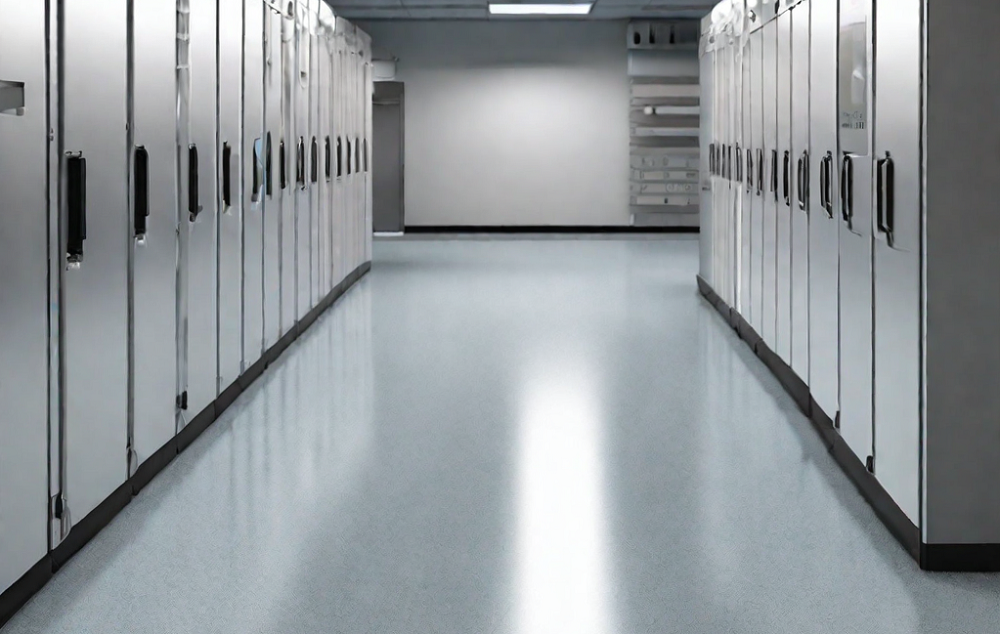Server rooms house critical equipment that is susceptible to damage from electrostatic discharge (ESD). To protect these sensitive devices, it is crucial to install anti-static flooring, also known as ESD flooring. This type of flooring helps to prevent the build-up and discharge of static electricity, ensuring the safe and reliable operation of servers and other electronic equipment. In this blog, we will explore the different types of ESD flooring options available for server rooms and discuss their benefits and suitability for this specific environment.

Anti Static Flooring Types for Server Room
When it comes to server rooms or data centers, static electricity can pose a significant risk to the sensitive electronic equipment housed within. Anti-static flooring is designed to dissipate static electricity and minimize the potential for electrostatic discharge (ESD) events that can damage or disrupt the operation of servers and other critical equipment. Here are some common types of anti-static flooring used in server rooms:
Raised access floors consist of panels supported by pedestals, creating an elevated floor with space beneath for cable management and airflow. Some raised access floor systems for server room include built-in static-dissipative properties, ensuring a controlled environment for the equipment.
- Consists of panels supported by pedestals, creating an elevated floor.
- Offers flexibility for cable management and airflow.
- Some systems include built-in static-dissipative properties.
- Allows easy access to underfloor infrastructure for maintenance and modifications.
- Suitable for large-scale server rooms and data centers.
Conductive Vinyl Flooring
This type of flooring contains carbon fibers or other conductive materials embedded within the vinyl composition. It provides a continuous path for static electricity to flow to ground, effectively dissipating static charges.
- Contains embedded carbon fibers or conductive materials for continuous static dissipation.
- Provides a low-resistance path for static electricity to flow to ground.
- Easy to clean and maintain.
- Durable and resistant to wear and tear.
- Can be installed as tiles or sheets.
ESD Carpet Tiles
ESD carpet tiles are specially designed with conductive fibers distributed throughout the carpet material. These fibers create a conductive network that allows static electricity to dissipate safely.
- Specially designed with conductive fibers distributed throughout the carpet material.
- Offers good static dissipation properties.
- Provides a comfortable and noise-reducing flooring option.
- Easy to replace individual tiles if damaged.
- Requires regular vacuuming and periodic professional cleaning.
Static Dissipative Floor Tiles
These tiles are made from materials that have a higher resistance to electrical conductivity compared to conductive flooring. Static dissipative tiles help control static charges by gradually dissipating them to ground.
- Made from materials with higher resistance compared to conductive flooring.
- Gradually dissipates static charges to ground.
- Offers a controlled level of static protection.
- Typically available in tile form for easy installation and maintenance.
- Can withstand heavy loads and high traffic.
Epoxy Flooring
Epoxy flooring is a durable and seamless option for server rooms. It provides excellent ESD protection and is resistant to chemicals, abrasion, and impact. Epoxy flooring can be customized with anti-static properties and is easy to clean and maintain.
- Consists of multiple layers, including a conductive primer and a topcoat.
- Provides a durable, seamless, and highly conductive surface.
- Excellent chemical resistance, making it suitable for harsh environments.
- Can be customized with various colors and finishes.
- Requires professional installation due to the complexity of the application process.
Which is the Best ESD Flooring for Server Room?
The best anti-static flooring for a server room depends on various factors, including the specific requirements of the server room, budget considerations, and compliance with industry standards. Each type of anti-static flooring has its advantages and considerations. Here are a few factors to consider when determining the best option:
- Level of Static Protection: Consider the sensitivity of the electronic equipment in your server room and the level of static protection required. Conductive vinyl flooring and epoxy flooring offer excellent static dissipation properties and are often preferred for high-security environments.
- Durability and Maintenance: Evaluate the durability and maintenance requirements of the flooring. Epoxy flooring and static dissipative floor tiles are known for their durability and resistance to wear and tear. They require less maintenance and can handle heavy loads and high traffic.
- Installation and Flexibility: Consider the installation process and flexibility of the flooring system. ESD carpet tiles and raised access floor systems offer flexibility in terms of installation, reconfiguration, and cable management.
- Compliance with Standards: Ensure that the chosen flooring option complies with relevant industry standards, such as ANSI/ESD S20.20 or local electrical codes, to ensure proper static protection measures.
- Budget Considerations: Evaluate the cost-effectiveness of the flooring option. ESD carpet tiles are often more affordable compared to conductive vinyl flooring or epoxy flooring.
Ultimately, the best anti-static flooring for a server room depends on the specific requirements and priorities of your organization. It is recommended to consult with flooring experts or data center professionals who can assess your needs and provide tailored recommendations based on factors such as static protection, durability, maintenance, and budget.
